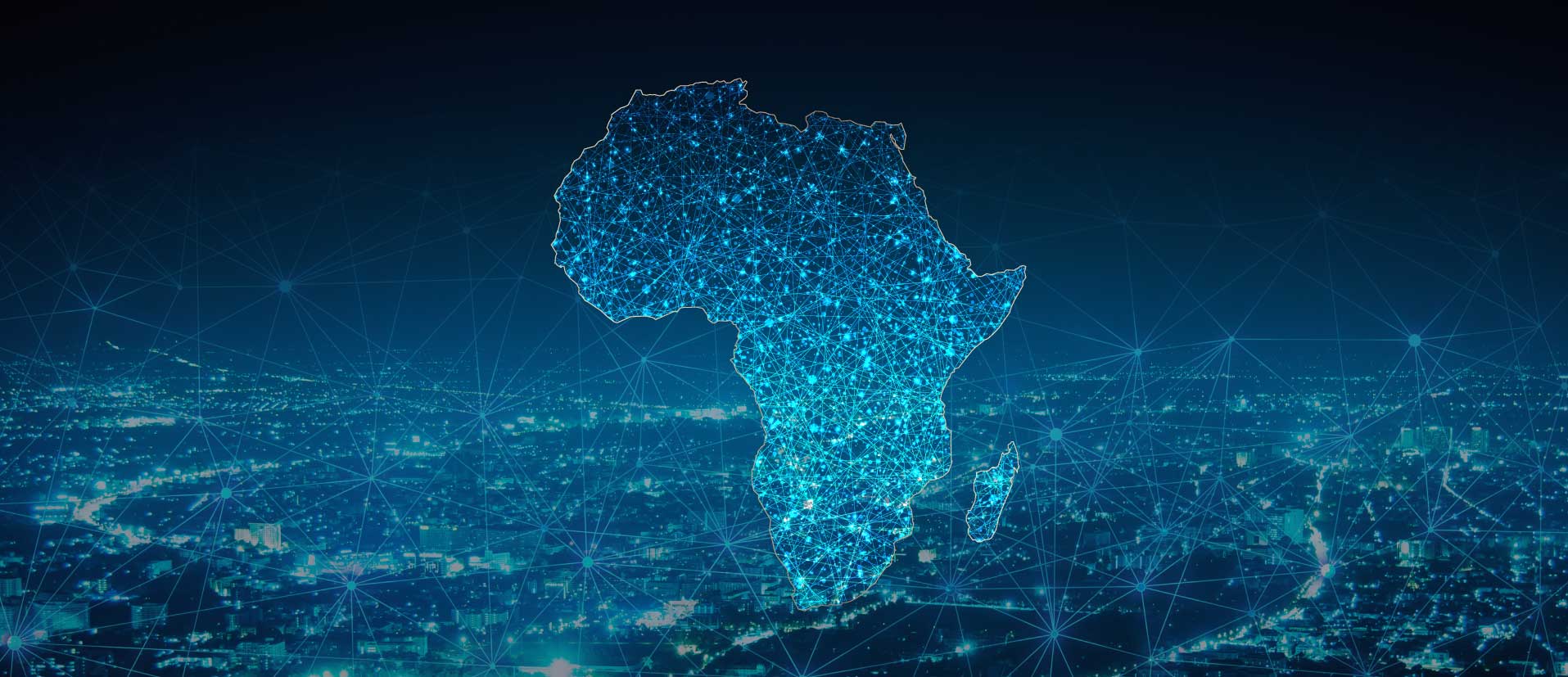Page Contents
The Business Case for IoT in Africa: Opportunities and Challenges

Page Contents
Africa is a booming continent with incredible growth potential, as the second-largest continent in the world and the world’s largest free trade area, connecting 1.3 billion people across a staggering 55 countries and a GDP estimated in the trillions.
Its population is growing steadily, with an estimated quarter of the global population anticipated to reside in Africa by 2050 – a sharp increase from a mere 10 percent in 1950. The demand to connect people and things is also growing with an expanding economy and population. The Internet of Things (IoT) can tremendously impact key verticals in Africa, including telecommunications, agriculture, telematics, energy and utilities, smart cities, healthcare, and more.
The African Market Landscape for the Internet of Things
The African market landscape for the Internet of Things is projected to have an annual growth rate of 15.9 percent, with a value of $239 billion by 2028.
The rise of IoT in Africa is driven by several elements, including a need to digitize industries such as manufacturing, transportation, agriculture, and retail. This creates a wide market for entry for both OEMs and IoT service providers.
The Challenges for IoT in Africa
With such a ripe market for IoT in Africa, why has the adoption of this technology not had an incredible trajectory?
1. The Network Ecosystem
One of the most significant challenges in Africa is creating a “borderless continent” in the sense of connectivity. Multiple Mobile Network Operators (MNOs) exist in Africa, but not a single MNO covers the entire country, which means leveraging a single provider will leave coverage gaps. The sheer scale of the continent coupled with a disparate technology ecosystem creates challenges for connecting devices and keeping devices connected.
Working with a single MNO creates carrier lock-in that is largely restrictive, not allowing flexibility to move to more available networks or higher-performing networks.
Conversely, working with multiple MNOs creates operational complexity. Multiple networks create an ecosystem of contracts, billing and usage systems, ordering, provisioning, and acting multiple SKUs for SIM cards. In reality, most organizations leveraging IoT simply want the SIM card to work without worrying about what SIM, where, and with which MNO.
2. Connectivity Challenges
The African connectivity market is certainly shifting and building toward modern communication demands, but the path from 2G and 3G to established and emerging technologies such as 4G LTE, 5G, and low-power CAT-M and NB-IoT networks is long.
Mobile networks built for 2G and 3G were built for text and voice communications, not for IoT. Pinpointing the correct type of connectivity for IoT communications can be a challenge anywhere in the world. However, positioning in a continent where legacy networks still have to sunset to help support LTE and 5G connectivity can create even more challenges. A future-proof approach can help bear the burden, but many considerations still abound when eyeing the African IoT market.
3. Network Limitations
Network capacity can undoubtedly be challenging in Africa due to the higher cost of later cellular generations or data-hungry devices that drain capacity.
WiFi can help significantly reduce the strain on mobile networks, but for IoT, connectivity that can move with the device, such as in telematics solutions, is required.
The challenge then becomes providing reliable, mobile connectivity across diverse and sometimes remote areas where advanced network infrastructure may not be readily available. This necessitates a multifaceted approach, combining existing cellular networks with emerging technologies and, potentially, satellite communication to ensure consistent and wide-reaching coverage.
Partnering for a Seamless IoT Approach in Africa
A Multi-IMSI SIM approach can help mitigate network challenges by allowing for high uptime in a challenging environment with coverage issues. This approach allows for flexibility in network choice and fallback in case of primary profile failure.
A Multi-IMSI approach can build resiliency, especially in regions with connectivity gaps. A single SIM that stores multiple carrier profiles allows the device connectivity to switch to the available or highest-performing network in the area. This failsafe approach gives a great range and coverage redundancy, particularly in challenging areas.
floLIVE has created the infrastructure that allows organizations to achieve IoT solutions globally but from a local-focused approach, leveraging MNO networks in the region to allow for several network profiles to serve a single solution. Through comprehensive management and high-performance connectivity, floLIVE consolidates the complexity of multiple network operators into a streamlined, single-pane-of-glass approach.
Our expert partnerships with organizations like CommsCloud and Adapt IT can help ensure the delivery of IoT solutions in challenging environments such as Africa can be met with a more seamless approach.
You can catch up by watching the full on-demand recording or keep reading to learn more about the challenges and opportunities for IoT in Africa.
To learn more about our global IoT strategy, reach out to schedule a call with one of our IoT experts. If you’d like to learn more about how CommsCloud leverages floLIVE for seamless, resilient IoT connectivity in Africa, you can read their case study here.


Join Our Newsletter
Get the latest tips and insights in our monthly newsletter.









